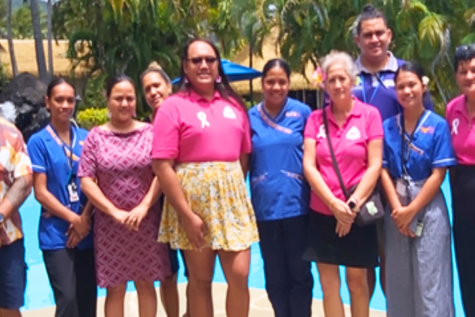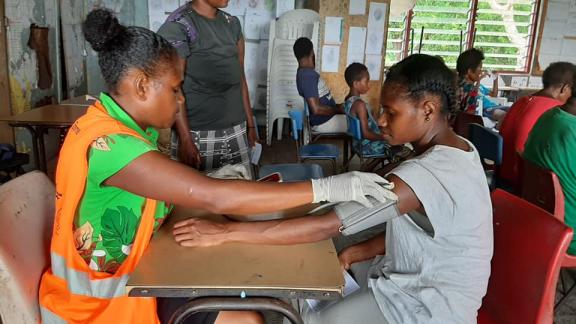Spotlight
A selection of resources from across the Federation

Cook Islands, New Zealand
Ora’anga Meitaki no te Vainetini: Cook Islands Women’s Wellbeing in the Context of Abortion
In 2022, research on abortion, including unsafe abortion, in Cook Islands was conducted by the University of New South Wales, University of the South Pacific Cook Islands Campus Te Puna Vai Mārama | Centre for Research, and Cook Islands Family Welfare Association (CIFWA). Ora’anga Meitaki no te Vainetini: Cook Islands Women’s Wellbeing in the Context of Abortion includes the lived experiences and stories of women, advocates, support persons and health workers in the Cook Islands and Aotearoa New Zealand.
Filter our resources by:


| 29 June 2022
SDG Accountability Manual
The SDG Accountability Manual seeks to support civil society to hold their government accountable for commitments made in the 2030 Agenda for Sustainable Development (the 2030 Agenda), with specific information on how to incorporate Sexual and Reproductive Health and Rights (SRHR) into the Sustainable Development Goals (SDGs). SRHR and the SDGs – Accountability Manual includes (available for download at the bottom of this page) Advocacy development tools: Key asks tool Research tool Stakeholder mapping tool Messaging tool Advocacy development tool Budget tool Monitoring and Evaluation tool Advocacy delivery templates: Report template Social media template Issue brief template Talking points template Media release template

| 28 June 2022
Samoa: Universal Periodic Review (UPR) – Third Cycle, HRC Session 43
Stakeholder Report Samoa Family Health Association (SFHA) submitted a report to the Human Rights Council ahead of the Universal Periodic Review (UPR) of Samoa. Our submission reported on the lack of full access to Comprehensive Sexuality Education (CSE) and low access to Comprehensive Sexual and Reproductive Healthcare. Download and read the full statement at the bottom of the page or watch the video here. Adoption of UPR Outcomes SFHA thanks Government of Samoa for its willingness to engage in open and constructive dialogue with civil society throughout the UPR process and applauds their commitment to adopt a comprehensive sexual and reproductive health policy and comprehensive sexuality education for adolescents. Download and read the full statement at the bottom of the page or watch the video here.

| 07 September 2021
Annual Report 2020
This Annual Report summarizes the collective efforts and accomplishments of IPPF Member Associations and Secretariat in East & South East Asia and Oceania Region (ESEAOR) for 2020. It also contains some stories behind the statistics. Some of the highlights include advocacy wins (contributed 22 policy wins related to SRHR); reached more than 22 million youth with comprehensive sexuality education (CSE); and delivered over 15.7 million sexual and reproductive health services to more than 5 million clients. Read on for more details.
| 16 June 2021
Meeting Needs of Young People for Comprehensive Sexuality Education
Many young people, who took part in this review, are telling us that they are not yet receiving quality sexuality education in a timely manner. Less than a third of online youth survey respondents feel that their school taught them about sexuality ‘well’ or ‘somewhat well.’ Satisfaction with sexuality education was even lower among lesbian, gay, bisexual, transgender and intersex youth respondents, and respondents with disabilities. Sexuality education is often starting too late. For example, 44% of girls had not received information on menstruation before their first period. As a result, many young people seem to be turning to other sources such as peers and the Internet - sources that are not always reliable. Young people, including those from vulnerable populations, should be engaged in comprehensive sexuality education design, planning and evaluation for both in- and out-of-school programmes.
| 16 June 2021
Monitoring and Assessment for Comprehensive Sexuality Education
Most countries in Asia and the Pacific do not have a clear monitoring and assessment system for sexuality education. A monitoring and assessment of school-based comprehensive sexuality education (CSE) should be integrated into the Education Management Information Systems (EMIS) or other national measures of education quality to assess the quality of delivery and student outcomes, as well as maintaining the quality of the curriculum. CSE curricula should also be piloted prior to implementation to ensure content is adjusted and takes feedback from participants into consideration before large-scale implementation. Moreover, the factsheet explains why CSE should be delivered as an examinable subject to observe learning outcomes. Students and teachers may also take the content more seriously if it is taught as an examinable subject.
| 16 June 2021
Teachers’ Preparedness for Comprehensive Sexuality Education
While two-thirds of the Asia-Pacific countries surveyed are providing sexuality education pre- and /or in-service training to teachers, the quality and content are not known. All countries should develop country-specific curriculum for teacher training for effective, learner-centered comprehensive sexuality education (CSE) delivery, build competencies and skills of teachers with quality pre-service, in-service and refresher training as well as reference material, and promote supportive supervision, sharing and learning platforms for teachers delivering CSE.
Pagination
- First page
- Previous page
- …
- 4
- 5
- 6
- …
- Next page
- Last page









